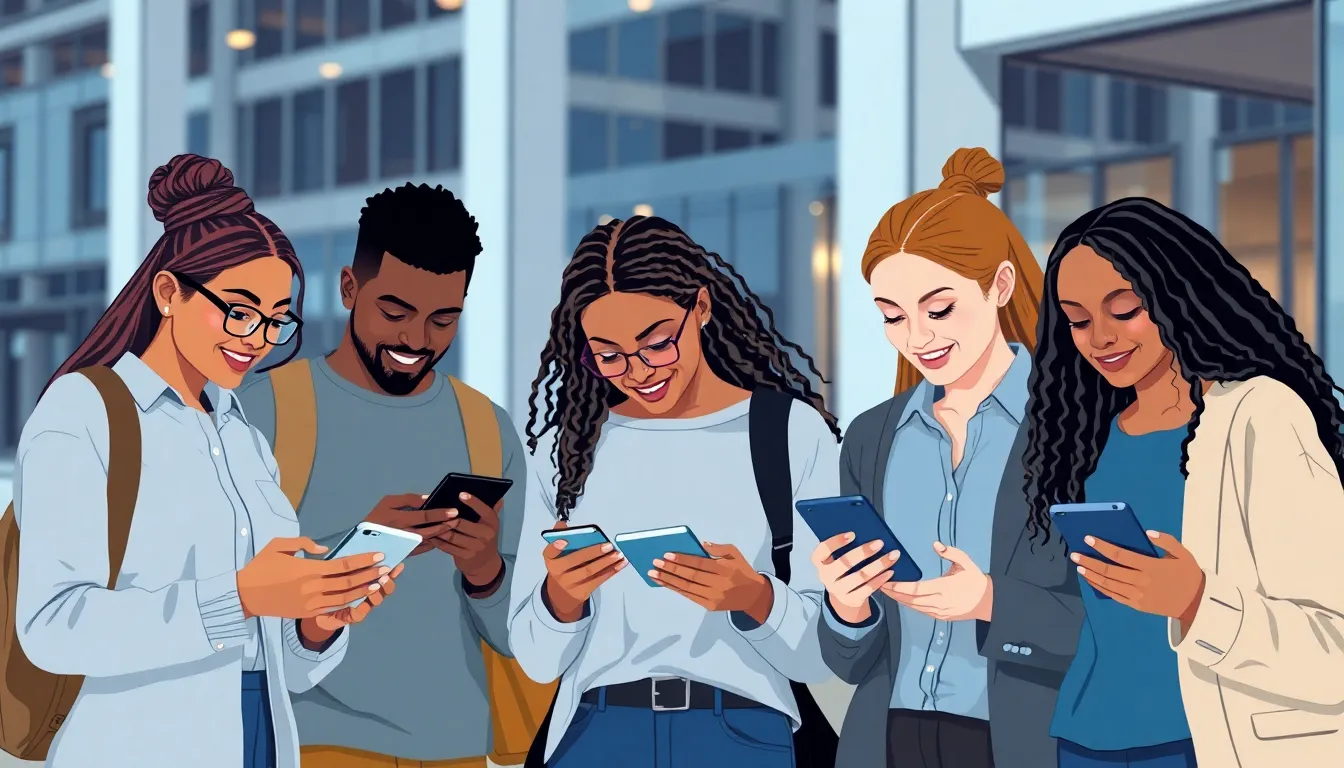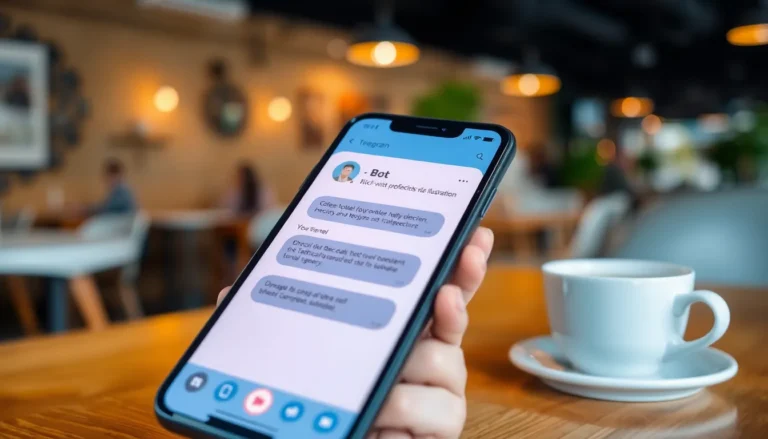In today’s fast-paced digital world, mobile devices aren’t just for scrolling through social media or ordering takeout—they’re essential tools for communication and productivity. But what happens when your app or service doesn’t cater to the diverse needs of its users? That’s where mobile diversity support struts in like a superhero in spandex, ready to save the day!
Table of Contents
ToggleUnderstanding Mobile Diversity Support
Mobile diversity support enhances user experience by addressing unique needs across various mobile platforms and devices. This capability ensures that applications and services remain accessible and functional for everyone, regardless of their specific requirements.
Definition and Importance
Mobile diversity support refers to the range of features and functionalities that assist users with diverse needs when interacting with mobile technology. This support includes accessibility options for individuals with disabilities, language preferences, and varying device capabilities. Recognizing the importance of these elements fosters inclusive design and leads to better user engagement. Users encounter applications that cater to their specific requirements, resulting in improved satisfaction and productivity.
Key Concepts in Mobile Diversity
Key concepts in mobile diversity include accessibility, customization, and adaptability. Accessibility features enable individuals with visual or hearing impairments to effectively use mobile applications. Customization allows users to tailor settings, enhancing their experience according to personal preferences. Adaptability refers to the capability of applications to function seamlessly across different devices and operating systems. These concepts collectively ensure that mobile technology serves a broad audience, fostering equal opportunities for all users.
Current Trends in Mobile Diversity Support

Mobile diversity support reflects advancements in technology and the importance of user-centered design. Understanding these trends enhances how apps and services meet varied user needs.
Innovations in Technology
Emerging technologies reshape mobile diversity support. Artificial intelligence improves accessibility features, making apps more responsive to users’ specific needs. Voice recognition technology enables hands-free navigation, especially valuable for individuals with mobility challenges. Enhanced machine learning algorithms personalize user experiences, adapting interfaces based on preferences. The rise of cross-platform development ensures seamless functionality across devices, broadening access for all users. Integration of augmented reality also adds a layer of immersive support, making complex tasks simpler and more intuitive.
User Experience Considerations
A focus on user experience remains pivotal in mobile diversity support. Diverse user backgrounds necessitate customization options that resonate with individual needs. Accessibility features, such as screen readers and closed captions, foster inclusivity. Localization of content caters to language diversity, enhancing understanding for multi-lingual users. User feedback mechanisms drive further improvements in service design, ensuring continuous refinement of features. Effective styling and intuitive navigation significantly enhance overall engagement, providing positive interactions regardless of device capabilities. Prioritizing these considerations amplifies satisfaction and nurtures loyalty among users.
Challenges in Implementing Mobile Diversity Support
Implementing mobile diversity support presents several challenges that hinder optimal user experiences across various platforms.
Technical Barriers
Technical barriers frequently impede the effective rollout of mobile diversity support. Limited compatibility across different operating systems restricts developer options. Complex coding requirements often create difficulties in adapting applications for diverse devices. Developers face challenges integrating accessibility features, as not all platforms provide standard tools for this purpose. Variations in hardware capabilities can result in inconsistent app performance, forcing some users to miss out on essential functionalities. Inconsistent internet connectivity complicates real-time access to features that rely on cloud support. These obstacles contribute to disparity in user experiences, limiting overall engagement and satisfaction.
Socioeconomic Factors
Socioeconomic factors impact the implementation of mobile diversity support significantly. Users from lower-income backgrounds may have limited access to the latest devices, affecting their interaction with advanced features. Geographic location influences mobile network availability, leading to disparities in app accessibility. Cultural differences determine the relevance of specific features, making universal design challenging. Education level can affect user understanding of available options, creating additional barriers for effective utilization. Furthermore, the cost of digital literacy training may discourage some individuals from fully engaging with mobile technology. Thus, these socioeconomic factors create a complex landscape for developers aiming to create inclusive experiences.
Case Studies in Mobile Diversity Support
Mobile diversity support showcases real-world applications that enhance user experience and inclusion. Examining successful implementations provides insight into effective strategies.
Successful Implementations
One prominent example involves a popular social media platform. The platform integrated voice recognition features for users with disabilities, enhancing accessibility. This adaptation allowed users to navigate the app through voice commands. Another successful case comes from a banking application that introduced customizable interfaces. Users can modify layouts and text sizes to fit their preferences. Feedback indicated increased user satisfaction and engagement with these features. Organizations prioritized user-centered designs, leading to broad adoption across diverse demographics. These implementations highlight the importance of understanding user needs to build effective mobile solutions.
Lessons Learned from Failures
Failing to prioritize user feedback resulted in significant pitfalls for some applications. An e-commerce platform launched a new feature without adequate accessibility testing. Users with disabilities faced numerous barriers, leading to complaints and decreased usage. Another example involves a health app that didn’t consider varying internet access levels. Users in remote areas struggled to utilize the app effectively, affecting engagement rates. These missteps underscore the necessity of conducting thorough research and testing. Cultivating awareness of diverse user needs can prevent similar issues in future projects. Addressing these challenges helps organizations refine their approaches and better serve all users.
Future Directions for Mobile Diversity Support
Future developments in mobile diversity support hinge on the integration of emerging technologies and the establishment of robust policy recommendations.
Emerging Technologies
Innovations like artificial intelligence and machine learning transform how mobile applications cater to diverse user needs. Voice recognition technology enhances accessibility, allowing users to engage with their devices more intuitively. Augmented reality simplifies complex tasks, bridging gaps in usability across platforms. Tools that enable real-time language translation foster inclusivity, making apps accessible to non-native speakers. Moreover, advancements in device compatibility ensure that applications function effectively across various operating systems, expanding reach. The rise of 5G technology enhances user experiences by improving connectivity and network reliability, particularly in underserved areas. Ongoing investment in these technologies will further bridge the digital divide and foster a more inclusive mobile ecosystem.
Policy Recommendations
Establishing comprehensive policies will promote equitable access to mobile diversity support. Governments and organizations must collaborate to create guidelines that prioritize accessibility in app development. Incentives can encourage developers to adopt inclusive design practices and integrate diverse features. Supporting relationships between tech companies and advocacy groups will enhance awareness of user needs and foster meaningful solutions. Furthermore, training programs focusing on accessibility can empower developers, ensuring they possess the necessary skills to implement inclusive designs. Addressing socioeconomic disparities will involve investing in programs that provide access to mobile devices for lower-income users. By prioritizing inclusive policies, stakeholders can ensure that mobile technology serves everyone effectively.
Mobile diversity support is essential for creating an inclusive digital landscape. By addressing the varied needs of users through accessibility features and customization options, it ensures that everyone can engage effectively with mobile technology. The integration of emerging technologies like AI and machine learning plays a pivotal role in enhancing user experiences.
As the mobile landscape continues to evolve, prioritizing user-centered design will be crucial. Stakeholders must collaborate to implement policies that promote accessibility and inclusivity. By doing so, they can bridge the gaps in user experiences and foster a more equitable environment for all. The future of mobile technology lies in its ability to adapt and serve diverse user needs effectively.










